Filters: Collection: "ir_uspace"
| Creator | Title | Description | Subject | Date | ||
|---|---|---|---|---|---|---|
| 101 |
 |
Brunvand, Erik L. | A correctness criterion for asynchronous circuit validation and optimization | In order to reason about the correctness of asynchronous circuit implementations and specifications, Dill has developed a variant of trace theory [1]. Trace theory describes the behavior of an asynchronous circuit by representing its possible executions as strings called "traces" A useful relatio... | Asynchronous circuits; Circuit optimizations; Formal verification of hardware; Trace theory; Asynchronous circuit validation | 1992 |
| 102 |
 |
Gopalakrishnan, Ganesh | A correctness criterion for asynchronous circuit validation and optimization | We propose a new relation C. called strong conformance in the context of Dill's trace theory, and define B Q A to be true exactly when B conforms to A and the success set of B contains the success set of A. When B C. A, module B operated in module A's maximal environment AM (i.e. B || AM) exhibits a... | Validation; Optimization | 1992 |
| 103 |
 |
Roundy, Shadrach J. | A cost-effective planar electromagnetic energy harvesting transducer | This paper presents a planar multi-pole electromagnetic energy harvesting transducer. We report on the design, manufacture, and performance results of integrated devices based on this transducer. The transducer leverages recent advancements in the manufacture of multi-pole magnets and can be impleme... | 2012-01-01 | |
| 104 |
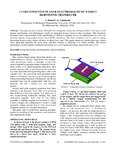 |
Roundy, Shad | A Cost-effective Planar Electromagnetic Energy Harvesting Transducer Technical Digest PowerMEMS 2012 (Atlanta, GA USA 2-5 December 2012) | 2012-12-05 | ||
| 105 |
 |
Warner, Homer R. | A Data-Trend Log and Bar Graph Dispaly for Physiological Monitoring | Biomedical Informatics | 1970 | |
| 106 |
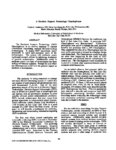 |
Warner, Homer R. | A Decision Support Technology Clearinghouse | Biomedical Informatics | 1988 | |
| 107 |
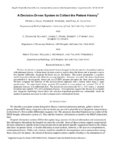 |
Warner, Homer R. | A Decision-Driven System to Collect the Patient History | Biomedical Informatics | 1987 | |
| 108 |
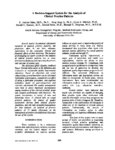 |
Mitchell, Joyce A. | A decision-support system for the analysis of clinical practice patterns | Several studies documented substantial variation in medical practice patterns, but physicians often do not have adequate information on the cumulative clinical and financial effects of their decisions. The purpose of developing an expert system for the analysis of clinical practice patterns was to a... | 1994-01-01 | |
| 109 |
 |
Barsky, Brian A. | A description of several tools for the synchronization of concurrent processes | Concurrent processes are tasks which may be executed simultaneously. When several such processes have access to shared variables, it is necessary to establish some regimen to control this access. Several language tools for expressing various synchronization disciplines are presented. | Concurrent processes | 1980 |
| 110 |
 |
Chamberlin, Ralph V. | A descriptive catalog of the Mollusca of Utah | In the preparation of this bulletin an effort has been made to bring together what was previously known of recent Utah mollusks and to incorporate with this the results of the authors' special studies. The form of presentation has been determined by the fact that, in the first place, the paper is in... | 1929-06 | |
| 111 |
 |
Anderson, Richard Bryan | A dialogue on PDA | 2011 | ||
| 112 |
 |
O'Connell, James F. | A Different Paradigm for the Initial Colonisation of Sahul: Archaeological, genetic, demographic and geographic perspectives | The questions of when and how humans reached Sahul, the Pleistocene continent of Australia and New Guinea, has remained a central issue of Australian archaeology since its development as an academic discipline in the mid-twentieth century. Additionally, this has been a dominant theme linking Austral... | Sahul; Wallacea; colonisation; isolation; genomics; mitochondrial DNA | 2019-08-20 |
| 113 |
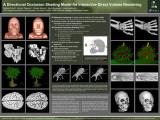 |
Schott, Mathias; Hansen, Charles D | A directional occlusion shading model for interactive direct volume rendering | Volumetric rendering is widely used to examine 3D scalar fields Key aspect: provide perceptual cues to aid in understanding the data set Shading models with natural lighting conditions better convey depth information and spatial relationships Traditionally require considerable (pre)computatio... | ||
| 114 |
 |
A distributed garbage collection algorithm | Concurrent Scheme extends the Scheme programming language, providing parallel program execution on a distributed network. The Concurrent Scheme environment requires a garbage collector to reclaim global objects; objects that exist in a portion of the global heap located on the node that created them... | Concurrent Scheme; Garbage collection algorithm | 1992 | |
| 115 |
 |
Evans, John | A distributed object-oriented graphical programming system | This report presents the design of a distributed parallel object system (DPOS) and its implementation using a graphical editing interface. DPOS brings together concepts of object-oriented programming and graphical programming with aspects of modern functional languages. Programs are defined as netwo... | Distributed parallel object system; DPOS | 1990 |
| 116 |
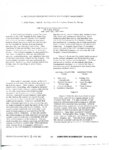 |
Warner, Homer R. | A Distributed Processing System for Patient Management | Biomedical Informatics | 1978 | |
| 117 |
 |
Narus, Scott P. | A domain analysis model for eIRB systems: addressing the weak link in clinical research informatics | Institutional Review Boards (IRBs) are a critical component of clinical research and can become a significant bottleneck due to the dramatic increase, in both volume and complexity of clinical research. Despite the interest in developing clinical research informatics (CRI) systems and supporting dat... | 2014-01-01 | |
| 118 |
 |
Mecklenburg, Robert | A dossier driven persistent objects facility | We describe the design and implementation of a persistent object storage facility based on a dossier driven approach. Objects are characterized by dossiers which describe both their language defined and "extra-linguistic" properties. These dossiers are generated by a C+-f- preprocessor in concert ... | Persistent object storage facility; Dossier driven | 1994 |
| 119 |
 |
Zhang, Lixin | A DRAM backend for the impulse memory system | The Impulse Adaptable Memory System exposes DRAM access patterns not seen in conventional memory systems. For instance, it can generate 32 DRAM accesses each of which requests a four-byte word in 32 cycles. Conventional DRAM backends are optimized for accesses that request full cache lines. They m... | Impulse Adaptable Memory System; DRAM | 1998-12-16 |
| 120 |
 |
Sobh, Tarek M. | A dynamic framework for intelligent inspection | CAD (Computer Aided Design) typically involves the design, manufacture and inspection of a mechanical part. The problem of reverse engineering is to take an existing mechanical part as the point of departure and to inspect or produce a design, and perhaps a manufacturing process, for the part. We pr... | CAD; Discrete event dynamic systems; DEDS | 1992 |
| 121 |
 |
Sobh, Tarek M.; Henderson, Thomas C. | A dynamic framwork for intelligent inspection | CAD Computer Aided Design typically involves the design manufacture and inspection of a me chanical part. The problem of reverse engineering is to take an existing mechanical part as the point of departure and to inspect or produce a design and perhaps a manufacturing process for the part. ... | CAD; Manufacture; Inspection; Intelligent inspection | 1992 |
| 122 |
 |
Sobh, Tarek M.; Henderson, Thomas C. | A dynamic recursive structure for intelligent exploration | We suggest a new approach for inspection and reverse engineering applications. In particular, we investigate the use of discrete event dynamic systems (DEDS) to guide and control the active exploration and sensing of mechanical parts for industrial inspection and reverse engineering. We introduce dy... | Intelligent exploration; Discrete event dynamic systems; DEDS; Dynamic recursive finite state machines; DRFSM | 1992 |
| 123 |
 |
Sobh, Tarek M.; Henderson, Thomas C. | A dynamic recursive structure for intelligent inspection | We suggest a new approach for inspection and reverse engineering applications. In particular we investigate the use of discrete event dynamic systems DEDS to guide and control the active exploration and sensing of mechanical parts for industrial inspection and reverse engineering?? We introduce... | Intelligent inspection; Discrete event dynamic systems; DEDS; Industrial inspection; Dynamic recursive structure | 1992 |
| 124 |
 |
Fogel, Alan Dale | A dynamic systems approach to infant facial action | What does it mean when a baby smiles? Is it an expression of enjoyment, a signal to a partner that rewards effective caretaking, or simply a muscular contraction? Do physically different types of smiles indicate different things? Should the social context in which an infant smiles inform our unders... | 1997 | |
| 125 |
 |
Whitaker, Ross T. | A fast iterative method for a class of Hamilton-Jacobi equations on parallel systems | In this paper we propose a novel computational technique, which we call the Fast Iterative Method (FIM), to solve a class of Hamilton- Jacobi (H-J) equations on massively parallel systems. The proposed method manages the list of active nodes and iteratively updates the solutions on those nodes u... | Fast Iterative Method; FIM; Parallel systems | 2007 |
